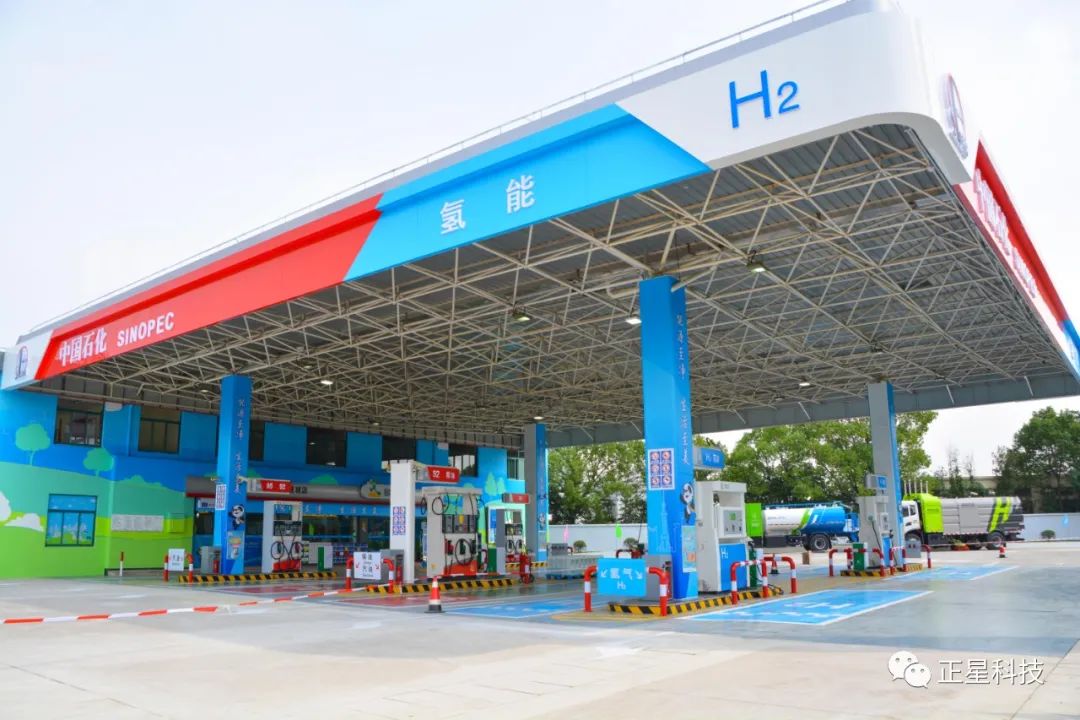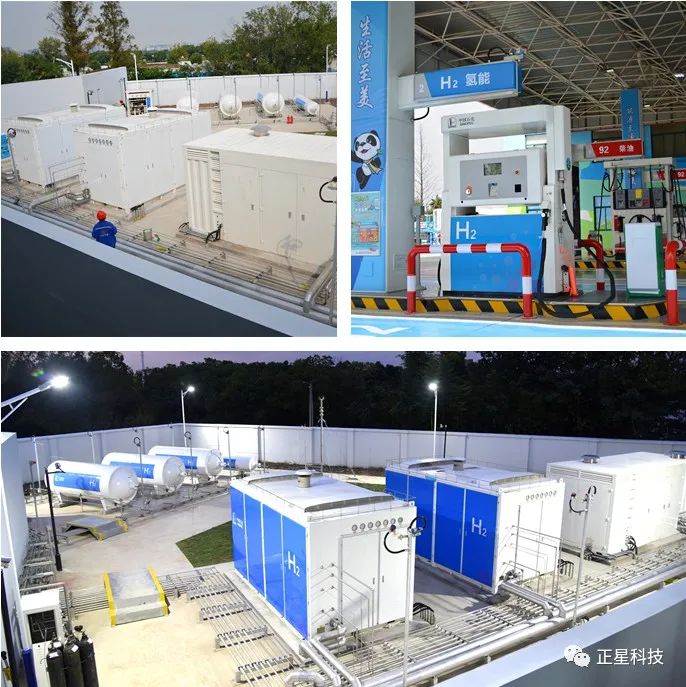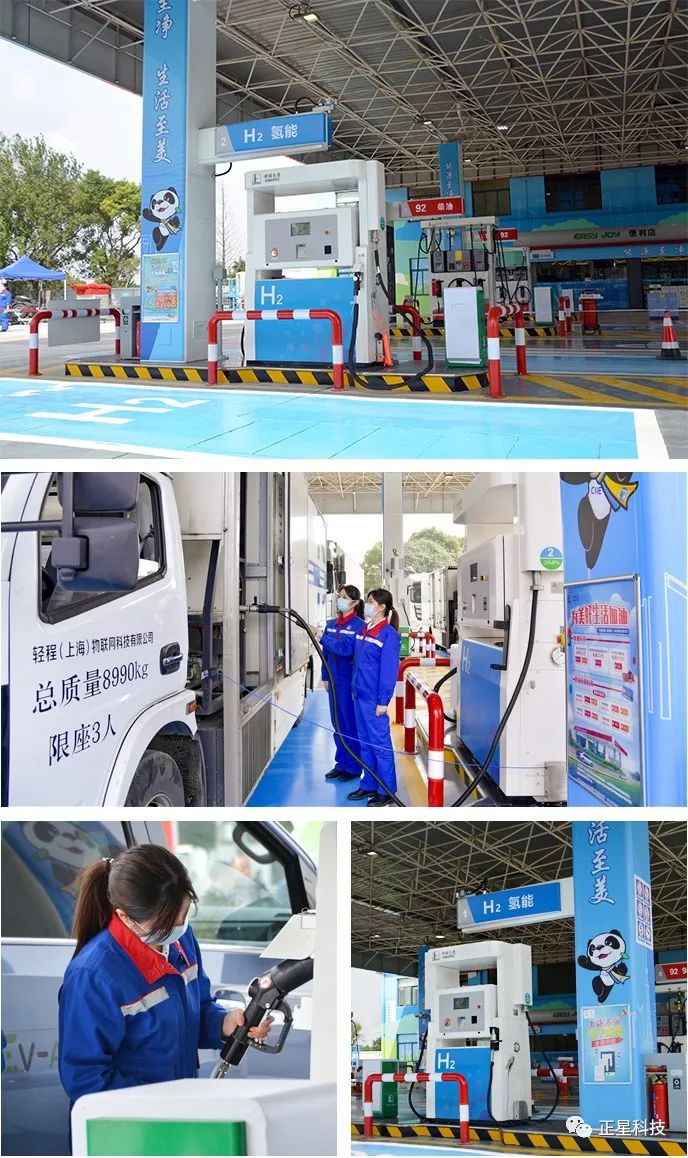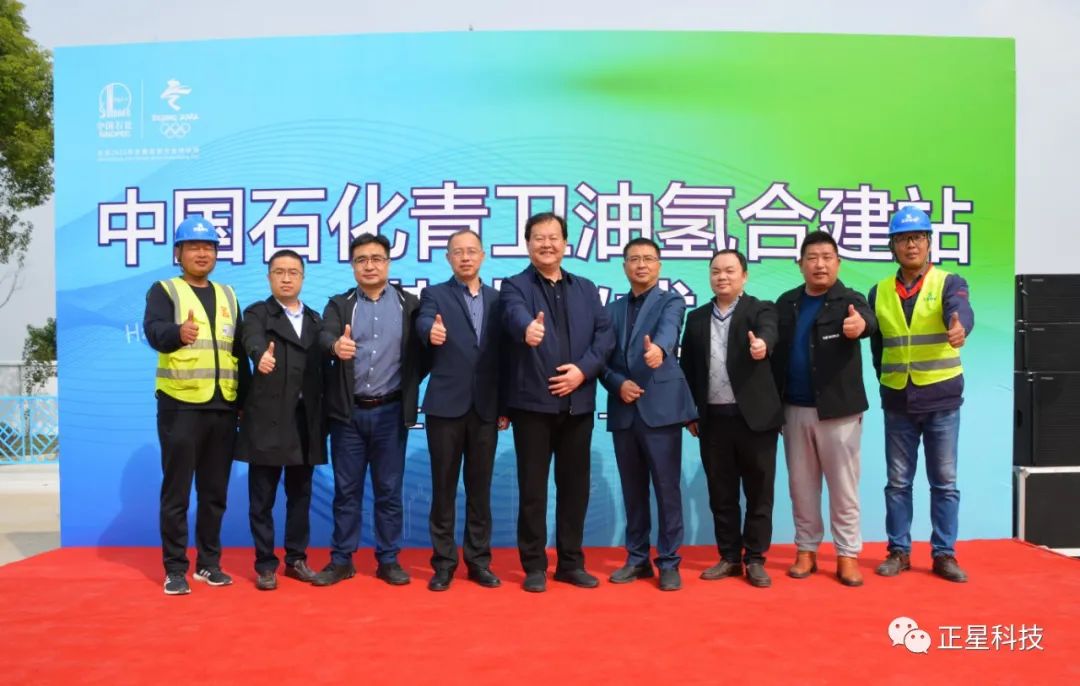SINOPEC Qingwei fuel-hydrogen station completed, Censtar contributes to green CIIA
2021-10-19
On the morning of October 19, the SINOPEC Qingwei fuel-hydrogen station opened in Shanghai. It is the first station in Shanghai with a hydrogen storage pressure of up to 90MPa and a dispensing capacity of 35/70 MPa.
Hydrogen energy technology is crucial for achieving the goals of "carbon peak" and "carbon neutrality." China aims to reach its carbon peak before 2030, while Shanghai plans to do so by 2025, five years earlier than the national goal. To boost the development of new green energy in Shanghai, Qingpu District, a hub for the hydrogen and fuel cell vehicle industry in the Yangtze River Delta region, SINOPEC has taken the lead in building energy infrastructure such as hydrogen stations and fuel-hydrogen stations.

The SINOPEC Qingwei fuel-hydrogen station is located in Qingpu District, Shanghai, less than 5 kilometers from the CIIA Shanghai hall. The CIIA has been promoting the "green" concept, adhering to sustainable development and environmental protection, and incorporating green elements into various aspects of the event. As a clean and zero-emission energy source, hydrogen fuel plays an increasingly important role in creating a green economic chain. The Qingwei Station can supply 1,000 kg of hydrogen per day, fully contributing to a green CIIA.
Censtar, a leading hydrogen energy enterprise, has provided the station with hydrogen equipment and installation and commissioning services, including compressors, dispensers, and hydrogen storage tanks, as well as a comprehensive solution. Among these, the compressor is the most important component of the hydrogen station, and the compressor head is the most core component, similar to the "engine" of a car. Censtar has equipped the station with 45 MPa and 90 MPa high-tech skid-mounted compressors, which are highly intelligent and meet the highest industry standards. Both compressors have smart remote/local switching functions, which can enable on-site start/stop and remote supervision as needed. The entire equipment of the station is intelligently controlled throughout its life cycle.

The station is equipped with Censtar dispensers, including 35 MPa and 70 MPa hydrogen dispensing systems. The 35 MPa hydrogen dispensing system can serve commercial vehicles such as trucks, logistics vehicles, and buses that are widely used in China. The 70 MPa hydrogen dispensing system is mainly for passenger cars. Building a hydrogen energy-driven society and meeting the hydrogen dispensing needs of passenger cars is the future trend of hydrogen stations. Currently, only a few manufacturers in China have this hydrogen dispensing technology.

As per capita income rises, Shanghai faces huge pressure from the growing carbon emissions from transportation and construction. Creating green transportation energy turns out to be a key way to achieve the city's dual carbon goals. According to Shanghai's "14th Five-Year Plan", by 2025, all buses, official vehicles, and cargo vehicles in the central urban area will be replaced with new energy vehicles. Hydrogen energy will be a powerful tool to achieve a low-carbon transition and help reduce emissions in urban transportation.


